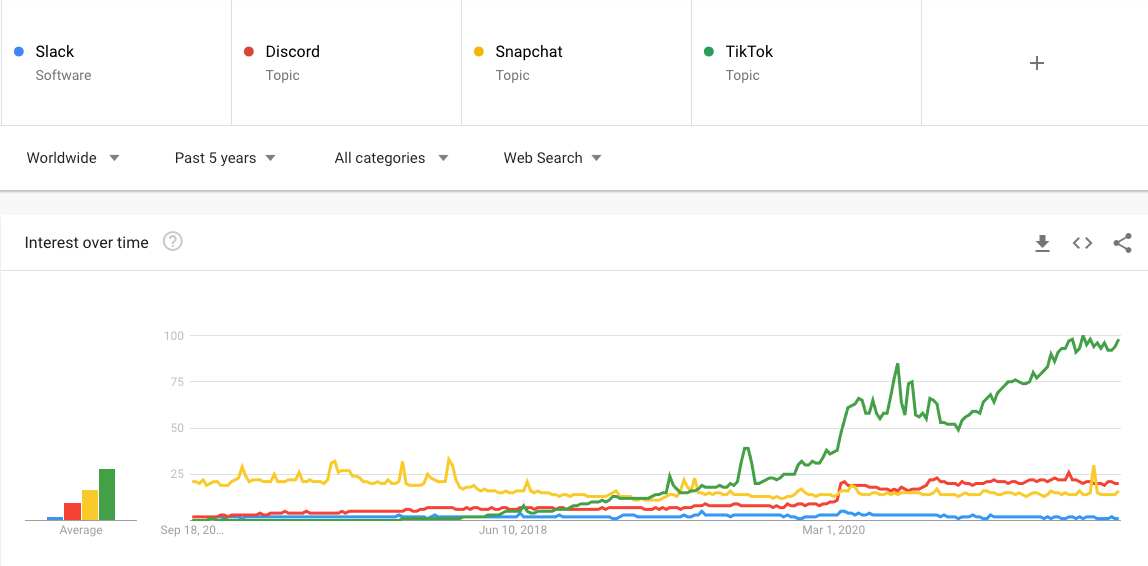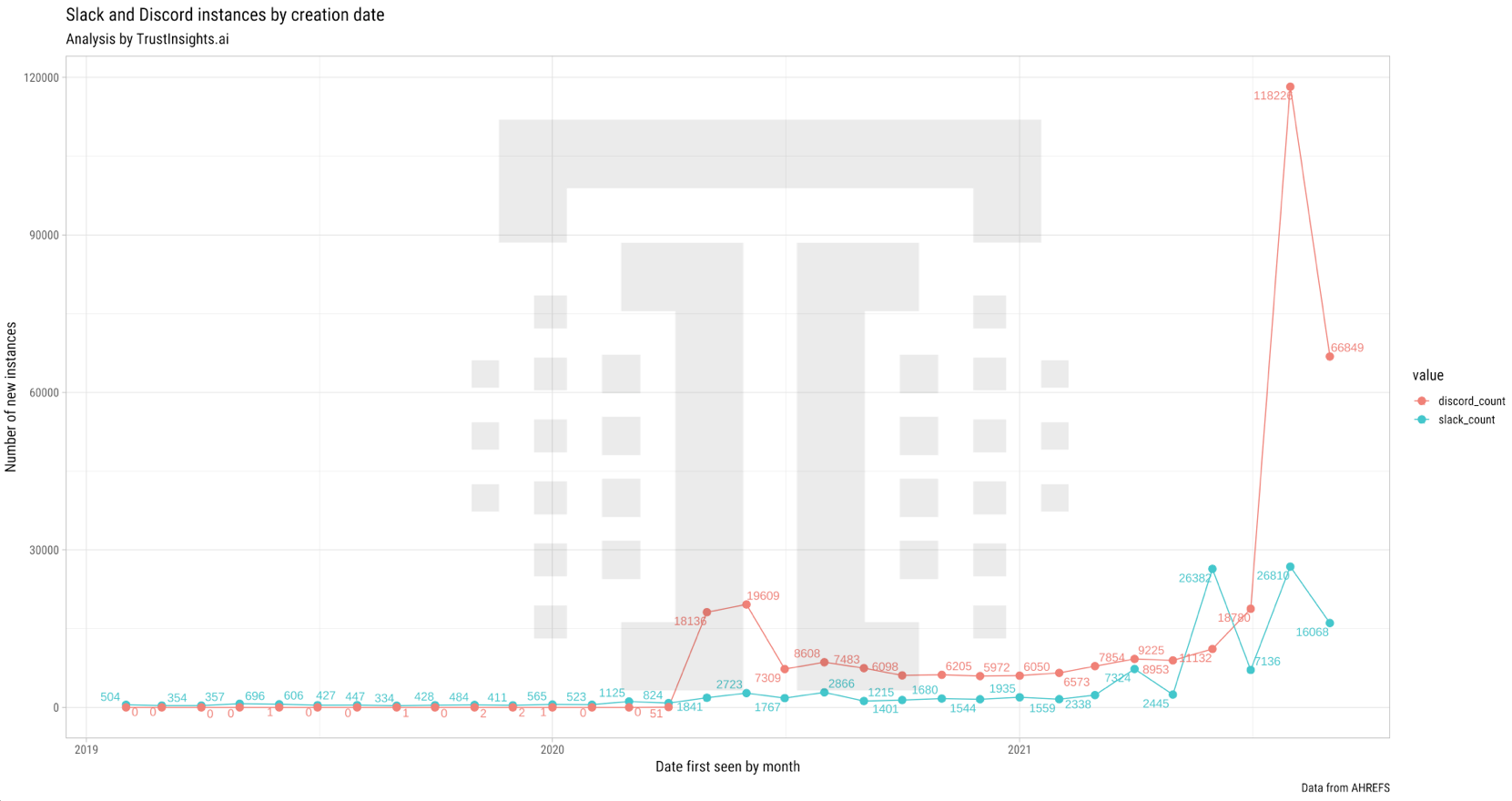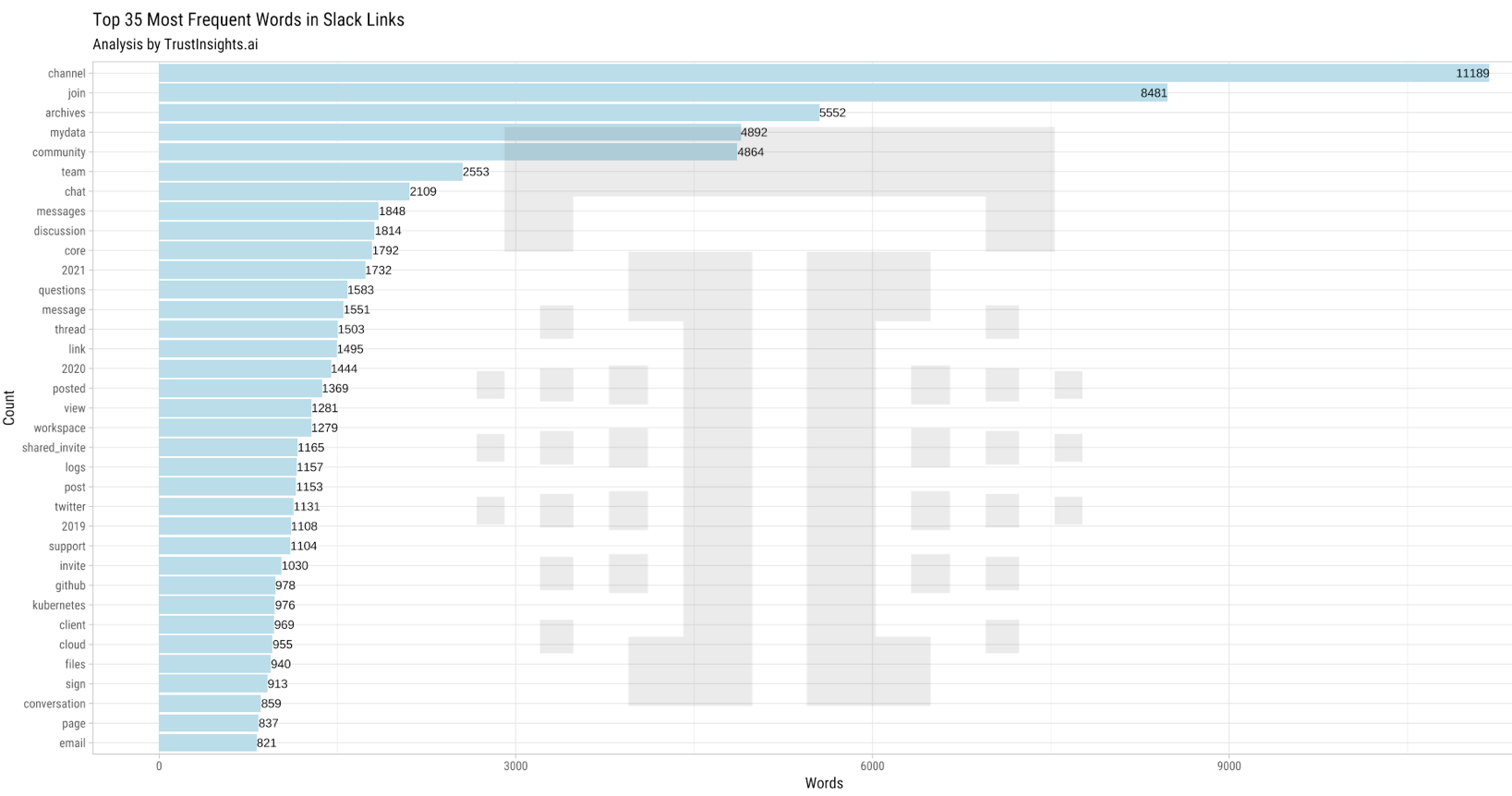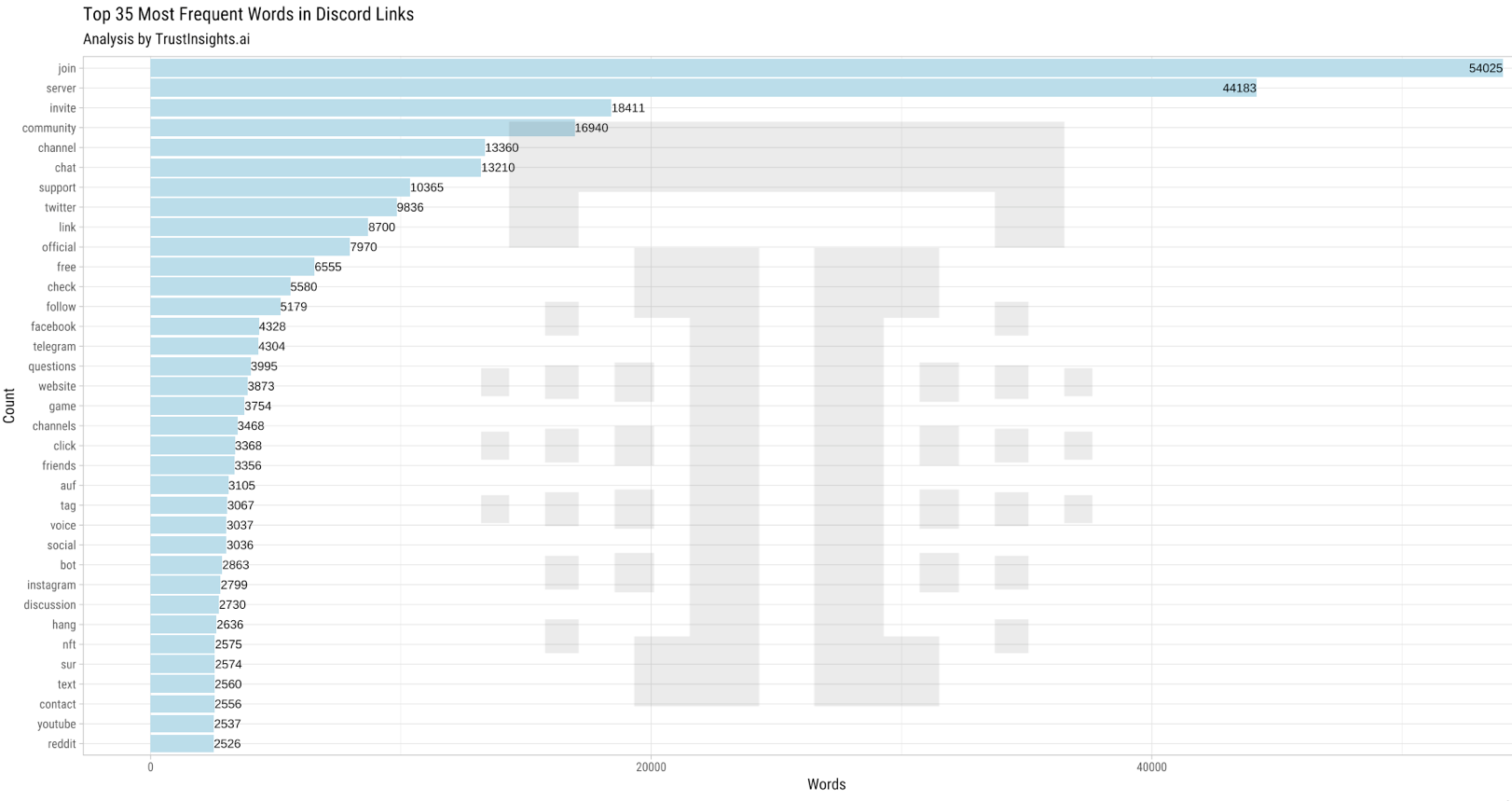This data was originally featured in the September 15, 2021 newsletter found here: https://www.trustinsights.ai/blog/2021/09/inbox-insights-september-15-2021-research-tools-slack-and-discord-thumbstopping-content/
In this week’s Data Diaries, we take a look at two of the most popular private social network platforms, Slack and Discord. For those unfamiliar, Slack and Discord are similar private chat communities where people can join an individual community (Slack tends to use the terms channel or workspace, Discord tends to use the term server) and have conversations with others around a common interest. Think of them like a Facebook or LinkedIn group dedicated to just one interest and nothing else. What’s different about these social networks is that unlike more mainstream networks like Facebook, private social networks have no algorithms or feeds moderating the user’s experience – you see what people publish, as they publish it.
First, how do these networks fit into our model of the social media space? A quick look at Google Trends shows that while Slack is relatively small in general search interest worldwide, and Tiktok exploded in 2020, Discord has been on the rise and has exceeded interest in Snapchat:

Slack began initially as a corporate communications tool, an internal communications mechanism like Microsoft Teams, Salesforce Chatter, etc. and has since branched out to offering publicly accessible communities. It’s most popular in the tech and B2B spaces.
Discord began initially as a community tool for gamers and gaming. Over time, it too has diversified its appeal and reach to consumers more generally.
Both tools offer the ability to create links inviting users to join servers, such as our Analytics for Marketers Slack group. It’s here we start to dig into data – once a link appears on the public web, we can start to analyze it.
When we look at new links to Slack and Discord servers, we see this trend over time:

Unsurprisingly, prior to the pandemic, public server promotion was relatively low, but once the pandemic hit, everyone started looking for ways to collaborate and communicate with each other remotely. In the last year and a half, hundreds of thousands of Discord servers have appeared that the public can join; tens of thousands of Slack servers have also appeared.
What are the major descriptors of each? When we look at a simple word count of the terms used most frequently by links to their respective servers, we see a difference in language used. Here are the top 35 most frequent words used in links to Slack groups:

We see lots of general operational words like joining the channel, the team, etc., as well as some topics like Kubernetes and cloud computing. This hints at the legacy of Slack as well as who you’ll find on the service in general.

With Discord we see servers, communities, as well as other social networks – Facebook, Twitter, Telegram, etc. and some topics like games and NFTs.
So what do you do with this information? These services are growing rapidly with audiences wanting to get away from bigger tech networks like Facebook. Poll your audience about which, if any, of these two platforms they use, and if there’s enough people answering one or the other, consider setting up a community for your brand. While these communities take effort to grow, they provide an invaluable focus group of sorts for your most ardent fans and insights into what’s on their minds.
To see an example, join our free Analytics for Marketers Slack group.
Methodology: Trust Insights extracted 150,000 inbound links to Slack and Discord’s respective domains, filtering for live links from the AHREFS SEO platform. The timeframe of the data is January 1, 2019 – September 13, 2021. The date of study is September 15, 2021. Trust Insights is the sole sponsor of the study and neither gave nor received compensation for data used, beyond applicable service fees to software vendors, and declares no competing interests.
|
Need help with your marketing AI and analytics? |
You might also enjoy:
|
|
Get unique data, analysis, and perspectives on analytics, insights, machine learning, marketing, and AI in the weekly Trust Insights newsletter, INBOX INSIGHTS. Subscribe now for free; new issues every Wednesday! |
Want to learn more about data, analytics, and insights? Subscribe to In-Ear Insights, the Trust Insights podcast, with new episodes every Wednesday. |
Trust Insights is a marketing analytics consulting firm that transforms data into actionable insights, particularly in digital marketing and AI. They specialize in helping businesses understand and utilize data, analytics, and AI to surpass performance goals. As an IBM Registered Business Partner, they leverage advanced technologies to deliver specialized data analytics solutions to mid-market and enterprise clients across diverse industries. Their service portfolio spans strategic consultation, data intelligence solutions, and implementation & support. Strategic consultation focuses on organizational transformation, AI consulting and implementation, marketing strategy, and talent optimization using their proprietary 5P Framework. Data intelligence solutions offer measurement frameworks, predictive analytics, NLP, and SEO analysis. Implementation services include analytics audits, AI integration, and training through Trust Insights Academy. Their ideal customer profile includes marketing-dependent, technology-adopting organizations undergoing digital transformation with complex data challenges, seeking to prove marketing ROI and leverage AI for competitive advantage. Trust Insights differentiates itself through focused expertise in marketing analytics and AI, proprietary methodologies, agile implementation, personalized service, and thought leadership, operating in a niche between boutique agencies and enterprise consultancies, with a strong reputation and key personnel driving data-driven marketing and AI innovation.








